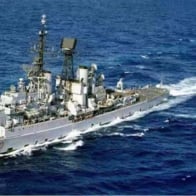33k in the air
Staff Sergeant
- 1,356
- Jan 31, 2021
How so in your mind specifically? The Germans were outnumbered in 1940 and 1941 and in 1944 in all categories. Yet they continued advancing the Allies stalled.
As stated, the political, economic, and military conditions were entirely different. Start by itemizing those differences.
What were the areas of operation? What was the terrain like in those areas? What was the state of the transportation networks in those areas? And leading to those areas? What were the opposing units composed of in terms of equipment? What were the levels of training and experience? What about the command structure — how was their level of experience? What tactics and doctrines were they trained to use? Were these appropriate to the level of experience and equipment in the component forces? What was the supply status of the units prior to action? What was the level of coordination with the air forces?
And so on. The above is just a partial list of the differences between 1940 and 1944.
Last edited:

